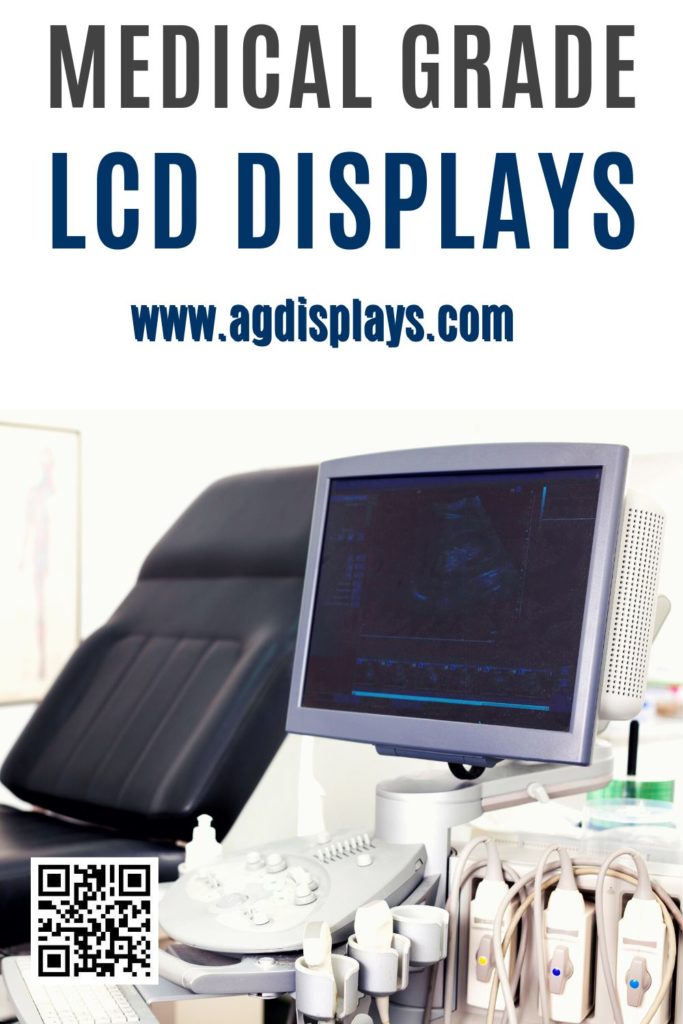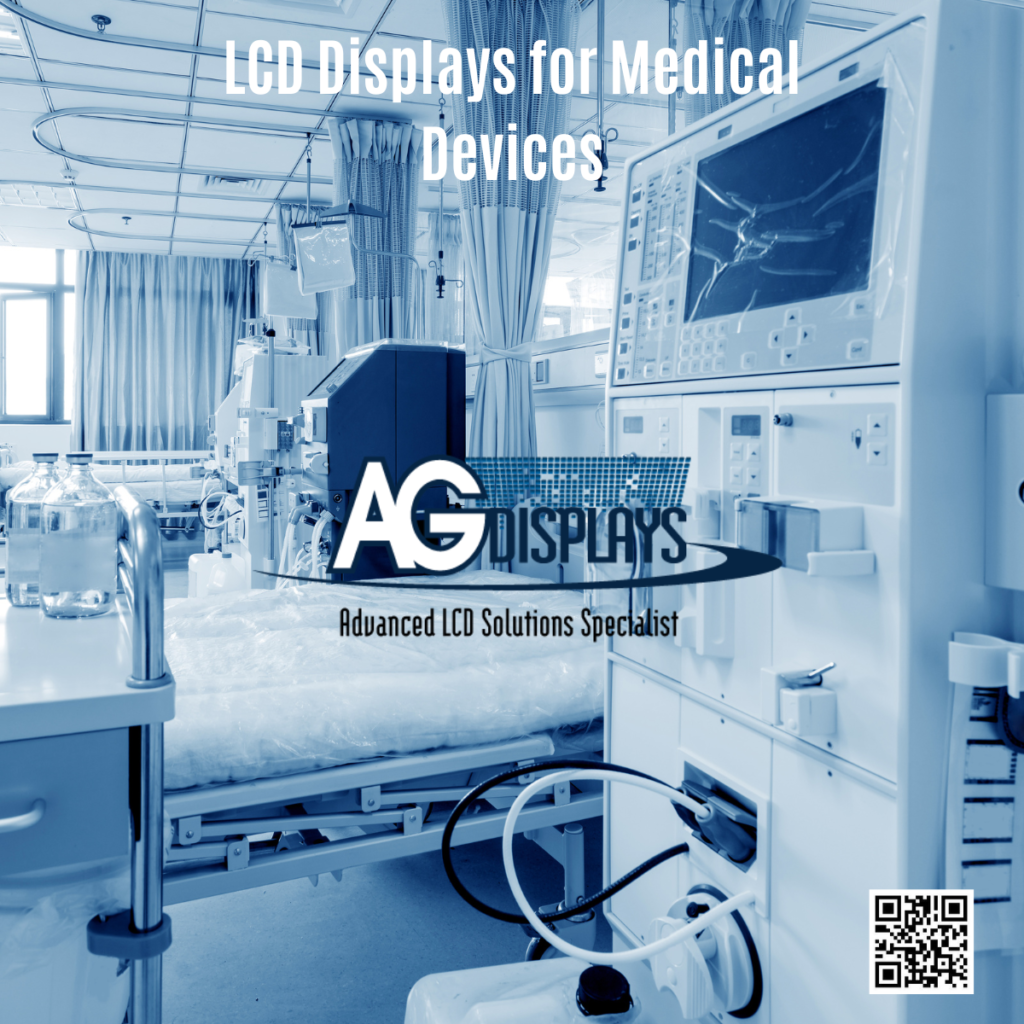The healthcare industry is in a state of constant evolution, with technological advancements driving improvements in diagnosis, treatment, and patient care. One such technology that has significantly influenced the medical field is the Liquid Crystal Display (LCD). While LCDs are ubiquitous in consumer electronics, their specialized applications in healthcare have distinct characteristics and benefits that set them apart from conventional displays. This blog will delve into the history of LCD displays in the medical industry, examine the unique benefits they offer, and compare medical-grade LCDs with their consumer-grade counterparts.
The History of LCD Displays in the Medical Industry
Early Adoption of Displays in Medicine
The use of display technology in healthcare can be traced back to the early days of medical imaging. In the mid-20th century, cathode-ray tube (CRT) displays were predominantly used in radiology for viewing X-rays and other imaging modalities. However, CRTs had several limitations, including bulky size, image distortion, and limited resolution, which hindered their effectiveness in the precise field of medical imaging.
The advent of LCD technology in the 1970s marked a significant turning point. Initially, LCDs were developed for calculators and digital watches, offering a compact and energy-efficient alternative to other display technologies. However, as the technology matured, its applications expanded into various fields, including healthcare. The early 2000s saw the introduction of LCDs into the medical industry, where their advantages over CRTs, such as slimmer profiles, lower power consumption, and better image stability, began to be recognized.
Evolution of Medical-Grade LCDs
As medical imaging technologies advanced, the demand for higher resolution and more accurate displays grew. This led to the development of medical-grade LCDs, which are designed specifically to meet the rigorous demands of healthcare environments. Unlike consumer-grade LCDs, medical displays undergo stringent calibration and quality control processes to ensure that they meet the exacting standards required for accurate diagnosis and treatment planning.
One of the key milestones in the evolution of medical-grade LCDs was the introduction of high-definition (HD) and later, 4K resolution displays. These advancements allowed for greater detail and clarity in medical images, which is critical for accurately interpreting complex diagnostic data. The integration of DICOM (Digital Imaging and Communications in Medicine) standards into LCD displays further enhanced their utility in healthcare by ensuring consistent image quality across different devices and modalities.

Benefits of LCD Displays in Healthcare
Enhanced Image Quality and Diagnostic Accuracy
One of the primary benefits of LCD technology in healthcare is the enhanced image quality it provides. Medical-grade LCDs are designed to deliver superior brightness, contrast, and color accuracy, which are essential for accurately interpreting medical images. For example, in radiology, the ability to discern subtle differences in tissue density on an X-ray or MRI scan can be the difference between an early diagnosis and a missed diagnosis.
LCDs used in medical applications often incorporate advanced technologies such as in-plane switching (IPS) or fringe field switching (FFS), which offer wide viewing angles and consistent color reproduction. This is particularly important in a clinical setting where multiple healthcare professionals may need to view the same display from different angles without compromising image quality.
DICOM Calibration and Consistency
Another significant advantage of medical-grade LCDs is their adherence to DICOM standards, which govern the display of grayscale images in medical imaging. DICOM calibration ensures that the luminance and contrast of the display are optimized for medical images, providing consistent and reliable image quality across different devices and viewing conditions. This level of consistency is crucial for ensuring that medical professionals can accurately compare images over time, even if they were taken on different equipment or viewed on different displays.
Durability and Reliability in Clinical Environments
Medical-grade LCDs are also designed to be more durable and reliable than consumer-grade displays. In a healthcare setting, displays are often in use 24/7, and they need to withstand the rigors of constant operation. Medical LCDs are built with high-quality components that offer extended lifespans and reduced downtime, which is essential in environments where equipment failure can have serious consequences for patient care.
Additionally, medical displays are often designed with features that enhance their usability in clinical environments. For example, many medical-grade LCDs are equipped with anti-glare coatings to reduce reflections and improve visibility in brightly lit rooms. They may also include features such as sealed enclosures to prevent the ingress of dust and liquids, which is important in sterile environments like operating rooms.
Integration with Advanced Medical Imaging Technologies
The integration of LCD displays with advanced medical imaging technologies has further expanded their utility in healthcare. For instance, in surgical procedures, high-resolution LCD monitors are used in conjunction with endoscopic cameras and other imaging devices to provide real-time visual feedback to surgeons. These displays must deliver precise and accurate images to guide the surgeon’s actions, and any lag or distortion in the display can have serious implications for the outcome of the procedure.
In addition, the development of 3D LCD displays has opened new possibilities in medical imaging, particularly in fields such as radiology and surgery. 3D displays allow for more accurate visualization of complex anatomical structures, enabling better planning and execution of procedures. This technology is particularly valuable in minimally invasive surgeries, where the surgeon relies heavily on visual information to navigate the patient’s anatomy.

Comparison Between Medical-Grade and Consumer-Grade LCDs
Resolution and Color Accuracy
One of the most significant differences between medical-grade and consumer-grade LCDs is in their resolution and color accuracy. While consumer displays have made significant strides in resolution, with many offering 4K and even 8K options, medical-grade displays are optimized for grayscale imaging and the accurate reproduction of fine details. The color accuracy of medical-grade displays is also superior, with calibration that ensures consistent and true-to-life color reproduction, which is essential for tasks such as digital pathology or surgical planning.
Brightness and Contrast Ratios
Medical-grade LCDs are designed to offer higher brightness levels and better contrast ratios compared to consumer-grade displays. This is particularly important in radiology, where the ability to see subtle differences in grayscale images can be critical for accurate diagnosis. Consumer-grade displays, while capable of producing high brightness, often prioritize vibrant colors and dynamic contrast for entertainment purposes, which can lead to inaccurate representations of medical images.
Viewing Angles and Consistency
While consumer-grade displays have improved in terms of viewing angles with the adoption of technologies like IPS, medical-grade LCDs are designed to maintain image consistency across a wide range of viewing angles. This ensures that the image quality remains consistent, regardless of where the viewer is positioned relative to the screen. In a clinical environment, this is crucial as multiple healthcare providers may need to view the same display simultaneously from different angles.
Compliance with Medical Standards
Medical-grade LCDs are designed and manufactured to comply with strict medical standards, such as DICOM for image consistency and IEC standards for electrical safety. These standards ensure that the displays are suitable for use in medical environments, where any deviation from expected performance can have serious implications for patient care. Consumer-grade displays, while often more affordable, do not undergo the same rigorous testing and certification processes, making them unsuitable for critical medical applications.
Ergonomics and Usability in Healthcare Settings
In addition to the technical differences, medical-grade LCDs are also designed with ergonomics and usability in mind. For example, many medical displays are mounted on adjustable arms that allow for easy repositioning, which is important in environments where space is limited, and the display needs to be accessible from different positions. Consumer-grade displays, on the other hand, are often designed for static placement and may not offer the same level of flexibility.

Challenges and Future Directions
Cost Considerations
One of the main challenges associated with medical-grade LCDs is their cost. The high level of precision and quality control required to produce these displays means that they are significantly more expensive than consumer-grade alternatives. This can be a barrier to adoption, particularly for smaller healthcare facilities with limited budgets. However, the long-term benefits of improved diagnostic accuracy, durability, and compliance with medical standards often justify the initial investment.
Emerging Technologies
The future of LCD technology in healthcare is likely to be shaped by emerging trends such as the development of OLED (Organic Light Emitting Diode) and microLED displays. These technologies offer the potential for even higher resolution, better color accuracy, and improved energy efficiency compared to traditional LCDs. While OLED and microLED displays are still relatively new to the medical field, they hold promise for applications where the highest level of image quality is required, such as in digital pathology or surgical visualization.
Integration with AI and Machine Learning
Another area of future development is the integration of LCD displays with artificial intelligence (AI) and machine learning (ML) technologies. AI and ML have the potential to enhance the diagnostic capabilities of medical-grade displays by automatically analyzing images and highlighting areas of interest for further investigation. This could help to reduce the workload on radiologists and other medical professionals, allowing them to focus on the most critical cases.
Conclusion
The evolution of LCD technology has had a profound impact on the healthcare industry, providing medical professionals with the tools they need to deliver accurate diagnoses and improve patient outcomes. Medical-grade LCDs, with their superior resolution, color accuracy, and adherence to medical standards, offer significant advantages over consumer-grade displays, making them an essential component of modern medical imaging and treatment planning.
As technology continues to advance, the role of LCD displays in healthcare is likely to expand even further, with new developments in display technology and integration with AI-driven diagnostic tools. While challenges such as cost and the rapid pace of technological change remain, the benefits of LCD displays in healthcare are clear, and their continued evolution will undoubtedly play a crucial role in the future of medicine.
Visit our Shopify store: https://shop.agdisplays.com/

